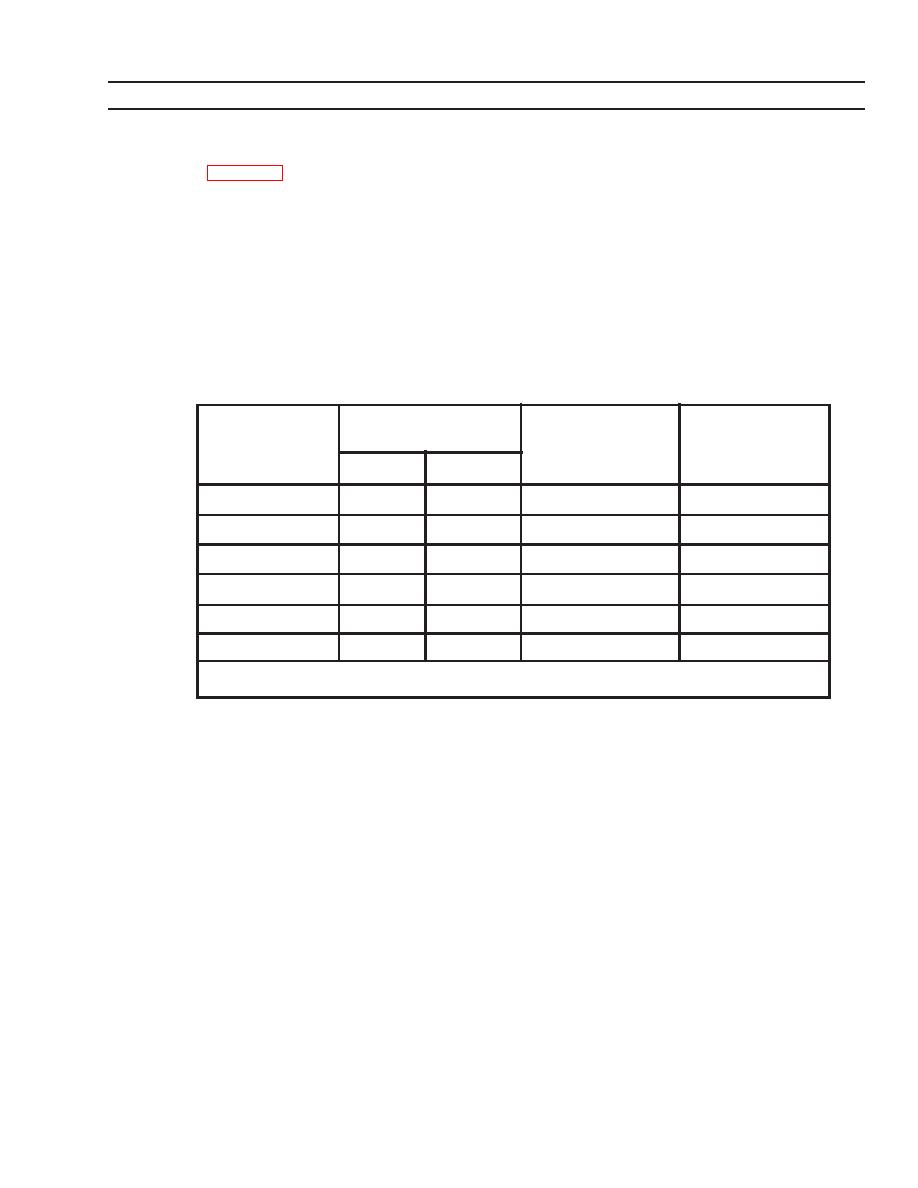
TM 5-2330-325-14&P
2-11.
PAYLOAD CONFIGURATIONS (Continued).
(4)
indicates if the criteria for a divisible load 80,000 lb (36,320 kg) max GVW has been met. A
`NO' in this column indicates that the combination exceeds the divisible load criteria and may
not be permitted under state and Federal guidelines. All combinations except the D7G/1150E
combination are within the capability of the trailer, however, and may be able to be transported
in countries with less stringent weight requirements. The D7G/1150E combination cannot be
transported on this trailer.
(5)
Check height of payload/trailer combination. Payloads exceeding 13 ft. 6 in. (4.12 m) may
require permits and special routing.
PAYLOAD
TOLERANCE
GROSS VEHICLE
DIVISIBLE LOAD
COMBINATION
WEIGHT (GVW)
CRITERIA MET
AXLE
KINGPIN
EBFL/4000
OK
OK
NO
94,166 lb (42,751.4 kg)
1150E/4000
OK
OK
NO
96,396 lb (43,763.8 kg)
NO
1155/4000
OK
OK
99,046 lb (44,966.9 kg)
TRAM/4000
OK
OK
NO
107,982 lb (49,023.8 kg)
NO
1155/1150E
OK
OK
112,850 lb (51,233.9 kg)
NO (1)
D7G/1150E
OK
NO
135,100 lb (61,335.4 kg)
Notes: (1) Exceeds trailer axle tolerance by 17,000 lb (7,718 kg).
c.
Configuration Examples.
(1)
The payload configuration for the trailer is determined by the operational requirements and the
loading information provided in the previous section.
(2)
Some examples of typical payload configurations are shown.
2-21

